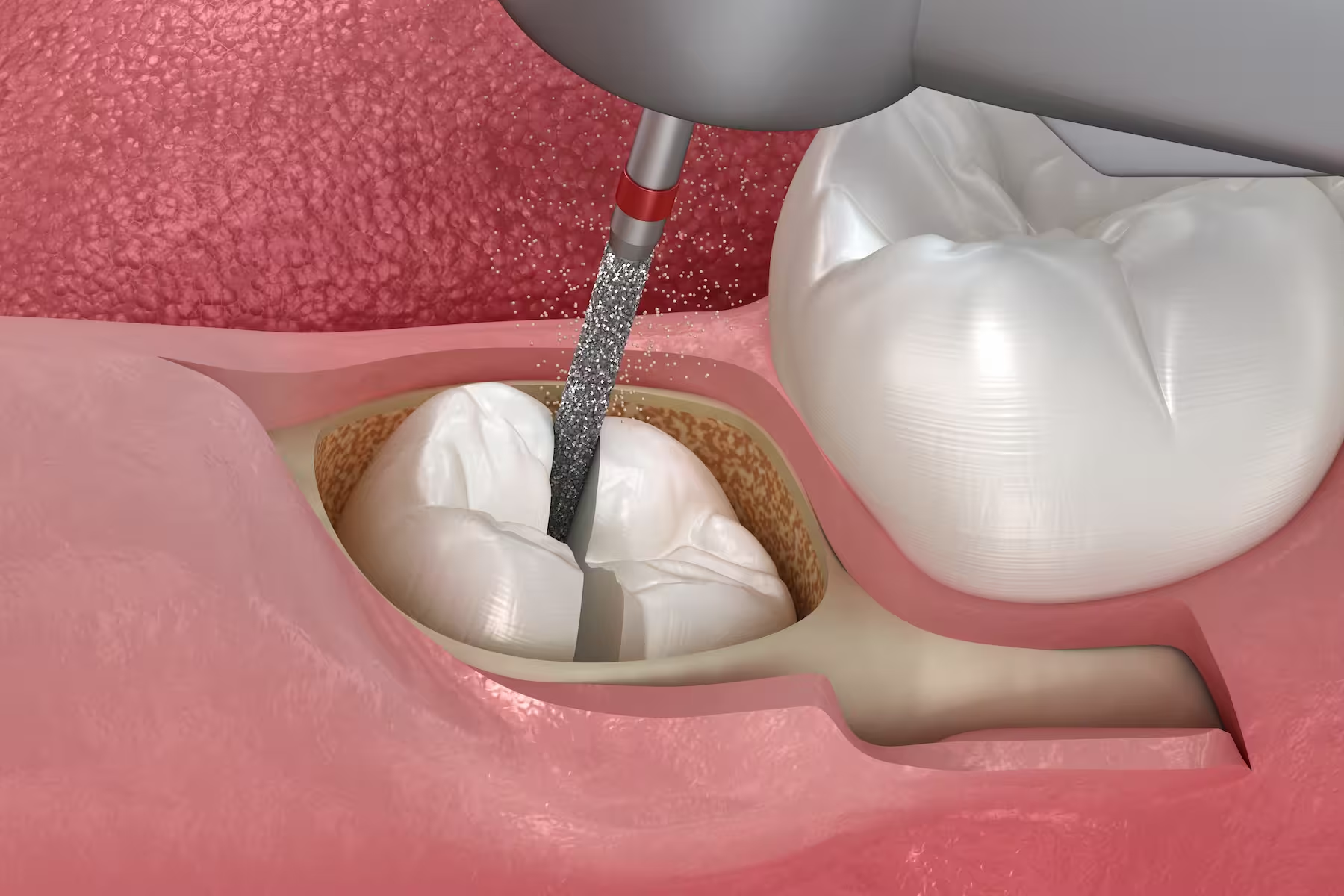Coronectomy in Boynton Beach, FL
A Safer Approach for At-Risk Wisdom Tooth Extractions
When extracting lower wisdom teeth that are close to the inferior alveolar nerve, a traditional removal can pose a risk of nerve damage. At South Palm Dental, we offer coronectomy as a conservative and effective surgical solution to protect your long-term oral health. Patients from Boynton Beach, Delray Beach, Gulf Stream, and Boca Raton trust us for this advanced procedure that minimizes complications while preserving nerve function.


What Is a Coronectomy?
A coronectomy involves the removal of only the crown portion of a lower wisdom tooth—leaving the roots intact if they are positioned near critical nerves. This technique is used when imaging shows that a full extraction could harm the nerve, causing permanent numbness, tingling, or pain in the lower lip, chin, or tongue. By carefully sectioning the tooth and removing only the top part, we avoid disturbing the nerve while still resolving infection, decay, or impaction concerns.
When Is Coronectomy Recommended?
You may be a candidate for a coronectomy if:
- Your lower wisdom tooth roots are in close proximity to the inferior alveolar nerve
- You’ve experienced previous complications with extractions
- CT scans show a high risk of nerve damage
- Your wisdom tooth is partially erupted or impacted
- You have symptoms like pain, swelling, or infection that require treatment
The Coronectomy Procedure
At South Palm Dental, we use advanced diagnostic tools like cone beam CT scans to determine whether coronectomy is the safest approach. During the procedure:
- Local anesthesia is administered for comfort.
- The crown of the tooth is carefully sectioned and removed.
- The roots are left undisturbed, reducing nerve exposure.
- The surgical site is cleaned and sutured, and healing begins.
In most cases, the remaining root fragments heal over naturally without issues.
Benefits of Coronectomy
- Minimizes the risk of permanent nerve damage
- Preserves jawbone structure and adjacent teeth
- Faster recovery than traditional full extractions
- Reduces pain, swelling, and risk of dry socket
Experience, Precision, and Patient-Centered Care
Dr. Luis Franceschi and Dr. Mary-Helen Habib are highly experienced in advanced oral surgeries, including complex wisdom tooth extractions and coronectomies. With over 230 surgeries performed and 35+ years of combined experience, our team uses precision diagnostics and minimally invasive techniques to keep your safety and comfort at the forefront. Our practice is known for personalized care, exceptional results, and a warm, supportive atmosphere.
Frequently Asked Questions
Is it safe to leave the roots behind?
Yes. When properly performed, the retained roots are sealed within the bone and pose no ongoing issues. In rare cases, if roots migrate or cause symptoms, further treatment may be discussed.
Will I feel pain after the procedure?
Some post-operative soreness is normal, but less so than with full extraction. Most patients recover quickly with minimal discomfort.
How long does it take to heal?
Initial healing occurs within 7–10 days, with complete bone healing over a few months.
Do the roots always stay in place?
In most cases, yes. If root migration occurs, we monitor it during follow-up visits to ensure there are no complications.
The rich text element allows you to create and format headings, paragraphs, blockquotes, images, and video all in one place instead of having to add and format them individually. Just double-click and easily create content.
Schedule a Coronectomy Consultation
If your wisdom teeth pose a risk to nearby nerves, a coronectomy may be the safest solution. At South Palm Dental, we’ll evaluate your case with state-of-the-art technology and a personalized approach to find the best treatment for your needs. Call today to schedule a consultation and protect your smile with expert care.

